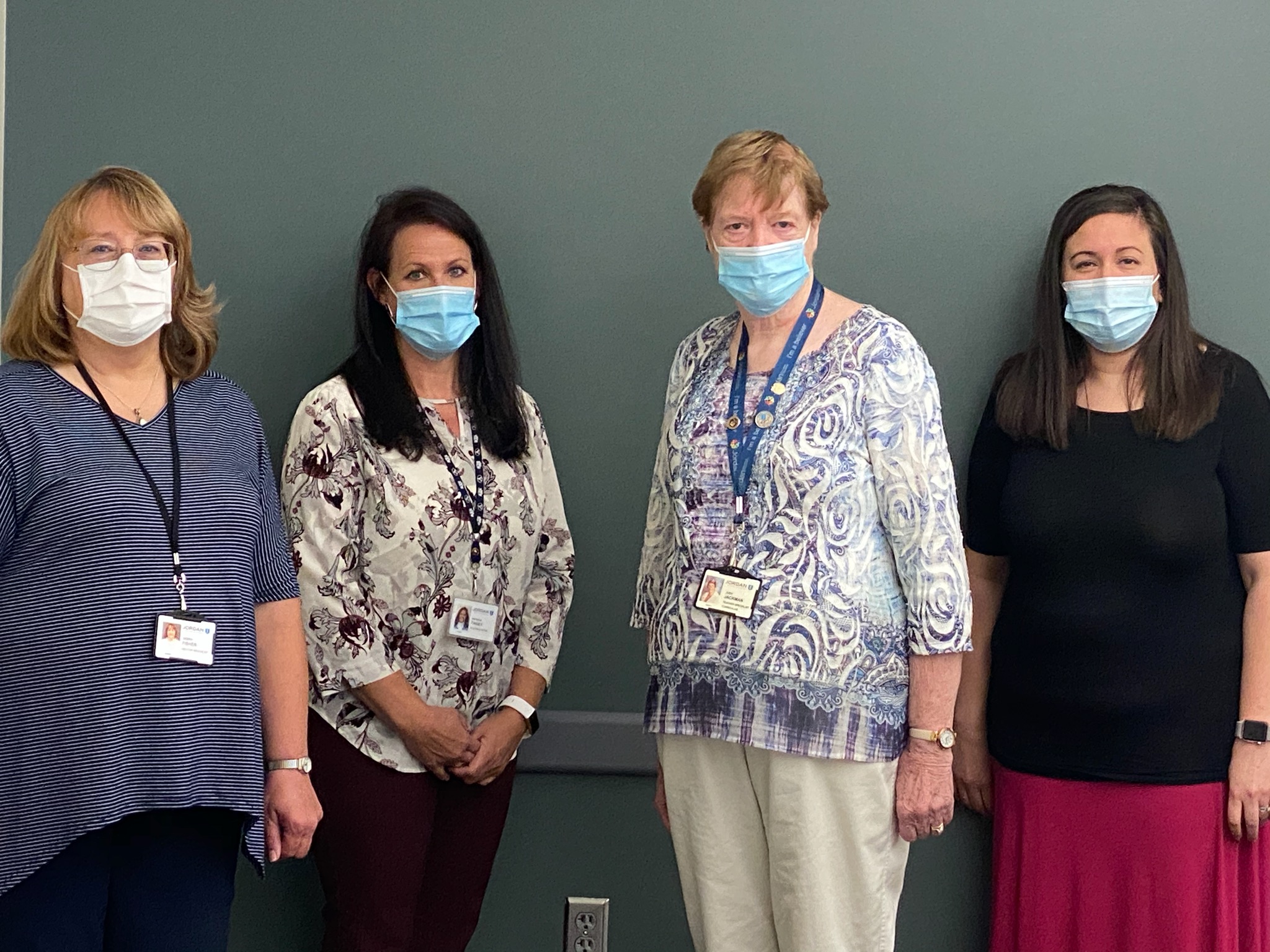Welcome to a new school year! We are excited to get into your schools and help this year!
To find out which mentor specialist works with your school, check out our contact us page.

Welcome to a new school year! We are excited to get into your schools and help this year!
To find out which mentor specialist works with your school, check out our contact us page.

Why should teachers have students practice routines? If you have ever had the chance to observe kindergarten, especially at the beginning of the year, you may see a lot of repetition of directions. Kindergarten teachers know that their students need to practice basic skills a lot: sitting in their seats, moving to the carpet, raising their hands to talk, sharpening pencils, lining up... you name it. Kindergarten teachers are pros at establishing routines.
Routines should be established and built in all levels of teaching. It is important for teachers to set these expectations and practice them with their students, even with older grades and students in secondary schools.
In this TED Talk, How To Use A Paper Towel, Joe Smith teaches adults how to help the environment by using paper towels more effectively. Watch the video and see what techniques he uses to help his audience remember the directions.
When we give directions, we should try to follow these basic ideas:
If you find you are struggling to have students follow directions or they struggle to do routine tasks, try using some of these ideas to help your students remember the routines and procedures for your classroom. It is never to late to polish up routines and procedures to help students be successful!
If you have attended a district training on classroom management with our amazing behavior specialists, you have most likely heard the phrase: "Where attention goes, behavior grows."
What does this mean though? The Tough Kid Book, by Rhode, Jensen, and Reavis, says: "If more teacher attention is given for inappropriate student behavior than for appropriate behavior, the inappropriate behavior will increase. With Tough Kids' teachers, this attention very often takes the form of excessive prompting, reminding, threatening, reprimanding, and verbal abuse, because these reactions seem to come naturally when teachers attempt 'pain control' of their own" (43).
Where is your attention going in your classroom? Are you feeding the negative actions of students and reinforcing the behaviors you don't want to see? What is your attention growing?
If you are feeling that some of these natural management tendencies (excessive prompting, reminding, threatening, reprimanding, and verbal abuse) are emerging in your teaching, maybe it is time to re-evaluate how you look at the Tough Kids' behavior. The Tough Kid Book has various strategies to try. You can access The Tough Kid Book in all JSD schools by checking with your school psychologist.
Strategies from The Tough Kid Book:
For more tips and ideas, see:
Rhodes, Ginger, William R. Jenson, and H. Kenton Reavis. The Tough Kid Book. Eugene: Pacific Northwest Publishing, 2010.
It’s the first day of school! Our state superintendent, Syd Dickson, has invited teachers in our state to participate in the #FirstDayofSchool Twitter and Facebook movement. She would like to see how many Utah teachers we can involve in this campaign. You can participate by posting a selfie with the downloadable sign from Concordia University’s website:
https://education.cu-portland.edu/firstday/
We hope to see your beautiful selfies with your sign to honor your years as a teacher! Have a great first day and a wonderful year!

Suggested Twitter tags: #FirstDayofSchool, @jordandistrict.org, #UTED, @DicksonSyd
Beginning your first year of teaching can be exciting and overwhelming all at the same time. Getting a classroom ready and planning those first few weeks can be all encompassing. Here are a few suggestions to make your transition to teaching in Jordan District a little easier:
1. Create an account in JPLS:
Here’s a new acronym for you to learn: Jordan Professional Learning System (JPLS). This is the district portal to find professional development classes offered in the district. To set up your account, you will want to contact the Help Desk at (801)-567-8737. The link is: https://jpls.truenorthlogic.com/U/P/Channel/-/Guest/Login
2. Sign up for a JPAS class:
JPAS (Jordan Performance Appraisal System) is our district evaluation system. Each year the JPAS department offers classes to help new teachers and veteran teachers learn how to work through the evaluation. New teachers even receive a stipend for taking the course if you attend the face-to-face version. Now that you have an account on JPLS, you can sign up for a class! Here’s their course schedule: http://jes.jordandistrict.org/educators/trainings/
3. Become familiar with Employee Access:
Do you know where to enter a sick day? Employee access is where you can find out how many days you have, what your current salary is, and even get a check estimate for what your next paycheck might look like. If you need help figuring this out, your mentor may be a great resource. (Have you met your mentor yet?) Here’s the link for Employee Access: https://skyfin.jordan.k12.ut.us/scripts/wsisa.dll/WService=wsFin/seplog01.w
How Do I Spend My Legislative Money?
Have you ever wondered what is best to buy with your legislative money?
Rules Regarding the Use of Legislative Money
 Non-consumable items you purchase will follow you through the school district. However, if you pool your money and purchase items with a colleague or team, the items should stay at the school where they were purchased.
Non-consumable items you purchase will follow you through the school district. However, if you pool your money and purchase items with a colleague or team, the items should stay at the school where they were purchased.Purchasing Ideas
| markers | giant sticky notes |
| colored pencils | dry erase markers |
| glue | vis-a-vis makers |
| scissors | mini white boards |
| crayons | class sets of approved books |
| organization tubs | books for classroom library |
| candy (for incentives and rewards/activities) | picture books for teaching |
| pens | bookshelves |
| pencils | wire baskets |
| class sets of highlighters | technology tools |
| post-it notes | paper |
| jump drives | notepads |
| classroom posters | teacher guides |
| dry erase paper | workbooks |
| rubber bands | stapler |
| 3 ring binders | electric pencil sharpener |
| 3 x 5 note cards | 3-hole punch |
| classroom set of calculators | storage crates |
| binder clips | name badges |
| push pins | awards |
Why should teachers have students practice routines? If you have ever had the chance to observe kindergarten, especially at the beginning of the year, you may see a lot of repetition of directions. Kindergarten teachers know that their students need to practice basic skills a lot: sitting in their seats, moving to the carpet, raising their hands to talk, sharpening pencils, lining up... you name it. Kindergarten teachers are pros at establishing routines.
Routines should be established and built in all levels of teaching. It is important for teachers to set these expectations and practice them with their students, even with older grades and students in secondary schools.
In this TED Talk, How To Use A Paper Towel, Joe Smith teaches adults how to help the environment by using paper towels more effectively. Watch the video and see what techniques he uses to help his audience remember the directions.
When we give directions, we should try to follow these basic ideas:
If you find you are struggling to have students follow directions or they struggle to do routine tasks, try using some of these ideas to help your students remember the routines and procedures for your classroom. It is never to late to polish up routines and procedures to help students be successful!
Some thoughts about the first days of school:
 Design a Successful Start
Design a Successful Start

One of the most challenging components of teaching a quality lesson is the ability to format and ask questions. Below are listed some areas in the lesson when questions can be used to promote student learning and understanding.
WHEN TO ASK QUESTIONS
We use questions at the beginning of learning experiences:
We use questions during and following learning experiences:
 New teachers are generally stressed about JPAS. Here are some ideas that will help.
New teachers are generally stressed about JPAS. Here are some ideas that will help.
First Five Minutes of a Lesson
Just a Heads UP! The JPAS class is an awesome class and well worth your time! Also check out the JPAS website at http://jes.jordandistrict.org/